Last week dozens of online photos of Comet NEOWISE enticed me to make an effort to see it for myself. At 9:00 PM on Friday I noticed that the sky was clear, threw some gear in a pack, and hiked up the hill behind the house. I sat in the grass in a big hilltop clearing as the sky darkened and first the comet, and then a million stars, and then the full sweep of the Milky Way emerged above me.
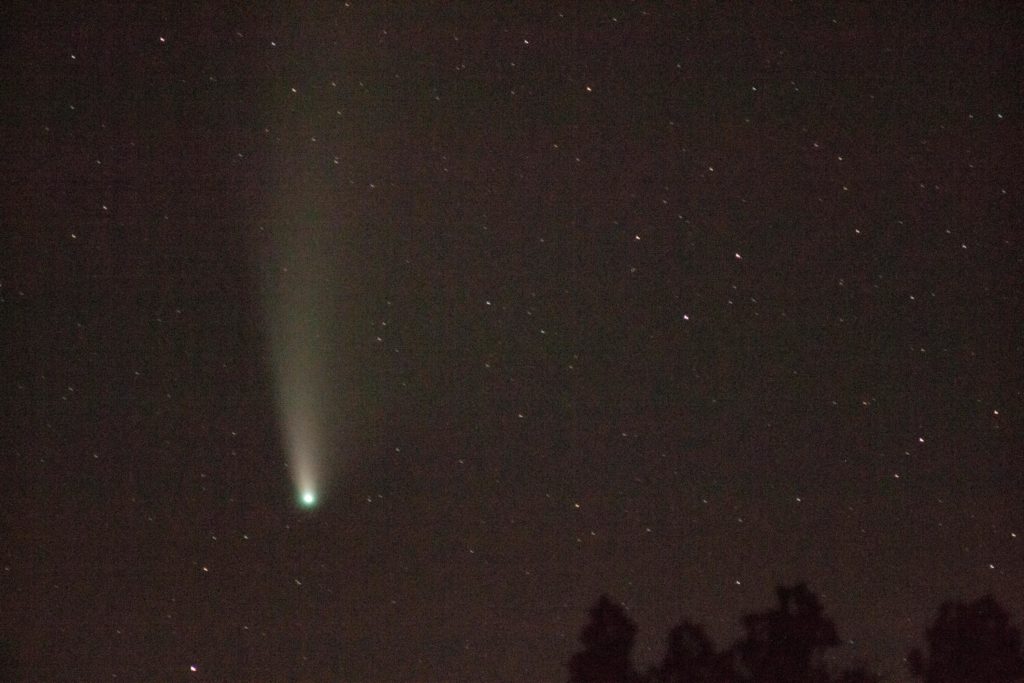
I have never done much stargazing or astrophotography, and didn’t know the names of most of the constellations or anything else above me. But it was warm, still, quiet, and strangely peaceful under the black dome. The presence of the comet made it a rare event, and the added conspicuous presence of the entire universe provoked a sense of wonder that I hadn’t expected.
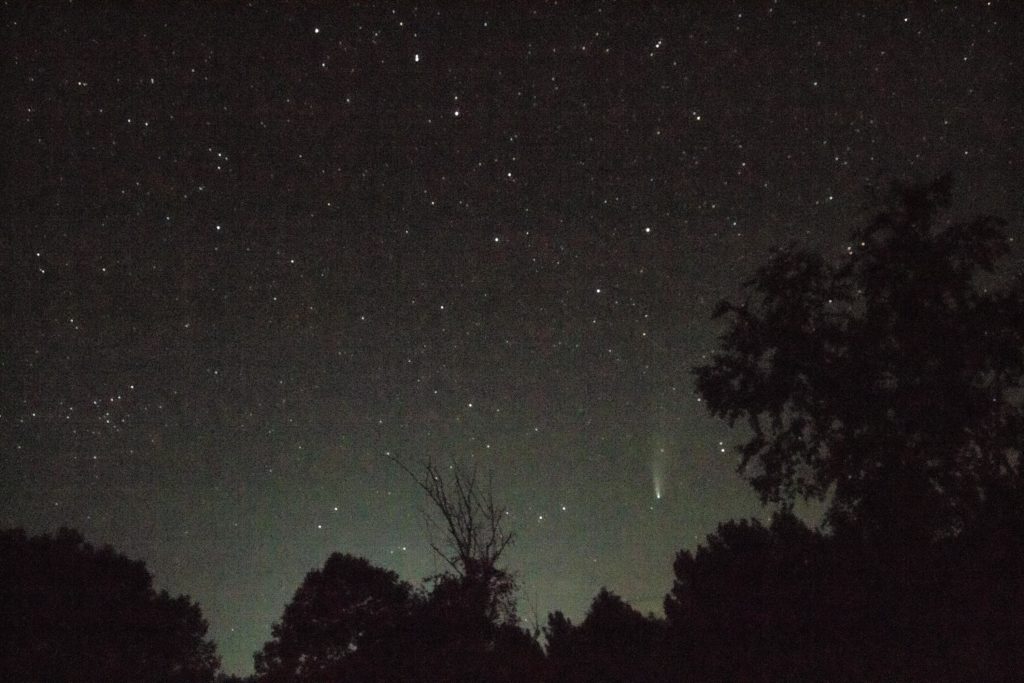
The Big Dipper tilted over NEOWISE as if the comet had just spilled out. I noticed a light flashing in front of the dipper that was not a meteor and was too white to be a plane. It moved steadily from west to east and I assumed it was the International Space Station (later confirmed here). I had not seen an ISS flyover for more than 10 years even though it happens several times every six weeks. I guess when I am not indoors at night I am not looking up.
Directly opposite the comet, in the southeast sky, was a star so bright that even I knew it was not a star. I swung the big lens around on its tripod and took a few photos. I displayed each one on the camera’s LCD until I got one that was focused and exposed correctly and zoomed in and noticed that there were four obvious moons around that planet. I knew it must be Jupiter (even though I had never seen the moons of Jupiter) and suddenly I felt both close to and far from the cosmos that I had skillfully ignored, year after year, inside that house down the hill.
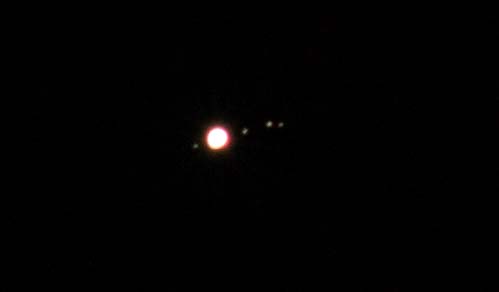

Saturn was right next to Jupiter, but I didn’t know it. I took a photo of Saturn and zoomed in, but there were no moons and no rings, so I had no evidence. My lens is not adequate to capture Saturn’s moons or rings. It turns out that Saturn and Jupiter are headed for a rare conjunction in December when they will be crazy close together.
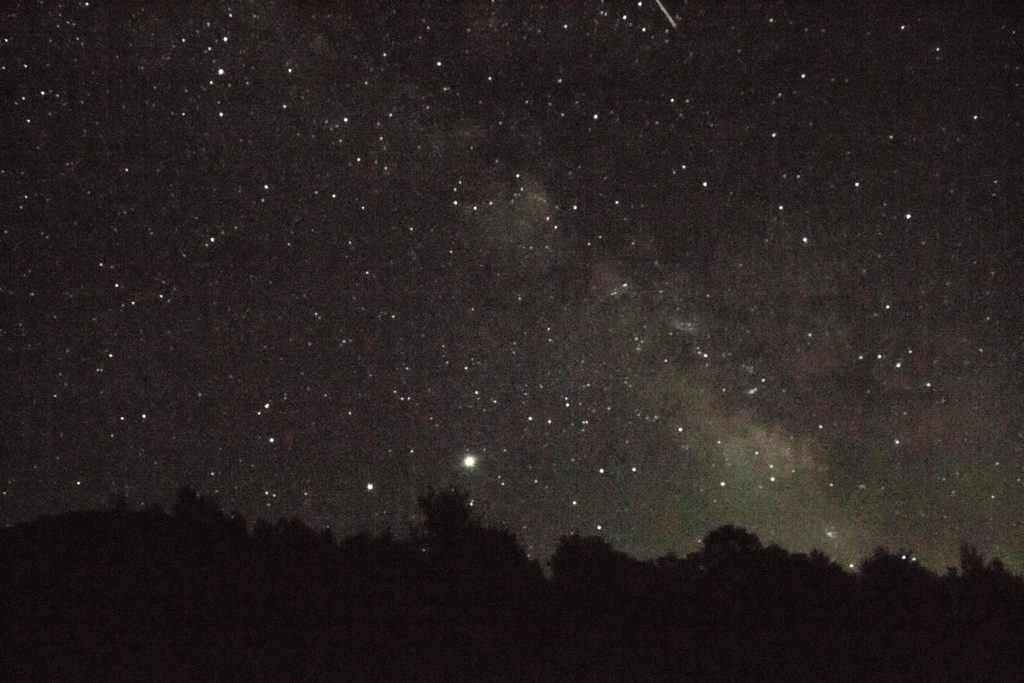
It happens that the week I was sitting on this hill under a deep sky was the 20th anniversary of my father’s death. And it happens that my father published papers about comets, Jupiter, stars in the Big Dipper, and observations made from spacecraft. I didn’t realize I was celebrating this anniversary, but I guess I was.

In 1974 Dad was part of a project to launch an Aerobee rocket with an ultraviolet spectrometer and point it at Comet Kohoutek. They were among the first to confirm that there was a lot of carbon in the comet’s ice (the “dirty snowball” concept). A decade earlier, on 11 days notice, Dad had tried to get a spectrum of Comet Ikeya-Seki, but it was too close to the sun and the data were useless. In 1986, Dad did not study Haley’s Comet, but he had a comet party in his backyard in Maryland and showed the comet to everyone through a telescope. I was driving from Vermont to Arizona that week and stopped in Maryland to attend the party. I continued my road trip a few days later and found a campsite in (or near) North Carolina with a nearby view of the distant eastern horizon. I rose early the next morning to photograph the comet which was now more visible in the pre-dawn hours. I think I saw it but it was too faint to photograph. Instead I got some amazing photos of the Sun rising.
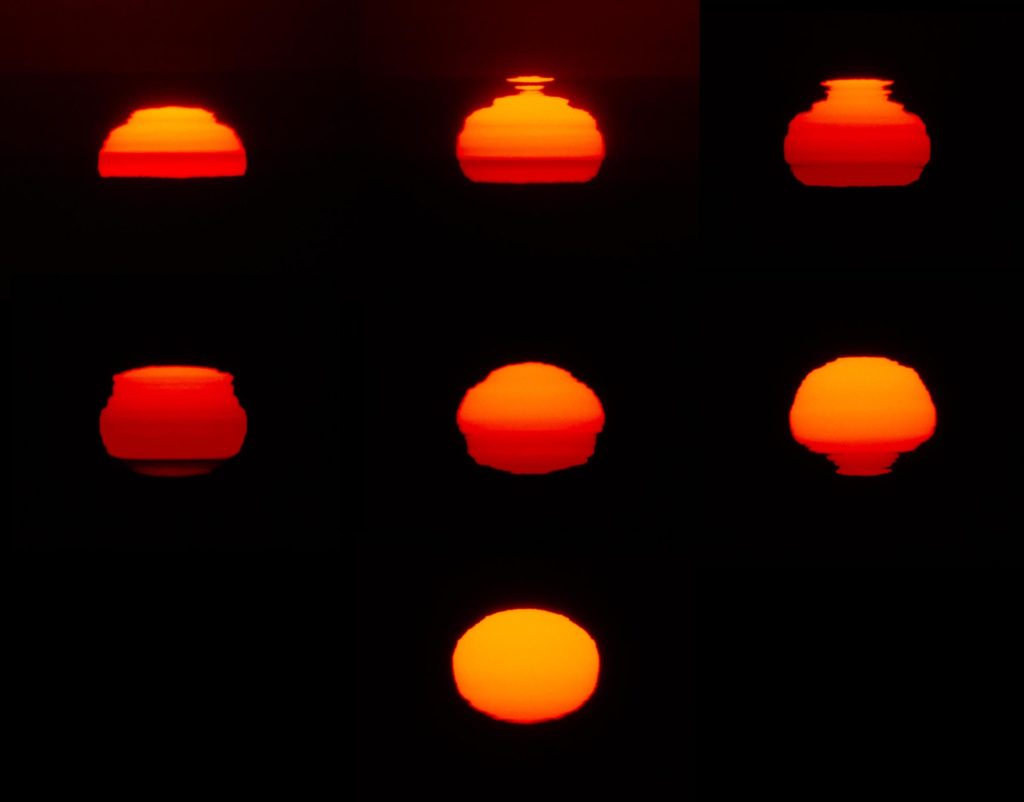
The spectrometers Dad was helping to design and use were always ultraviolet spectrometers and typically measured the far end of the ultraviolet spectrum (not just the UV that has slightly shorter wavelengths than violet light [400 nm], but the really high energy UV [100 to 200 nm or 1000 to 2000 Å]). Most ultraviolet light is absorbed by Earth’s atmosphere, so you can’t study the UV signatures of astronomical subjects unless you are above the atmosphere. That’s why there were so many rockets involved with Dad’s research.
In 1967 and 1971 Dad helped obtain ultraviolet spectra of Jupiter from Aerobee sounding rockets (the rocket, launched at an angle, carries the spectrometer above most of the Earth’s atmosphere [peak altitude about 170 km] for a few minutes and then continues it’s ballistic arc and returns to Earth). They found evidence of hydrogen in Jupiter’s upper atmosphere, and that could be from Jovian aurora, but they weren’t sure exactly what they had learned.
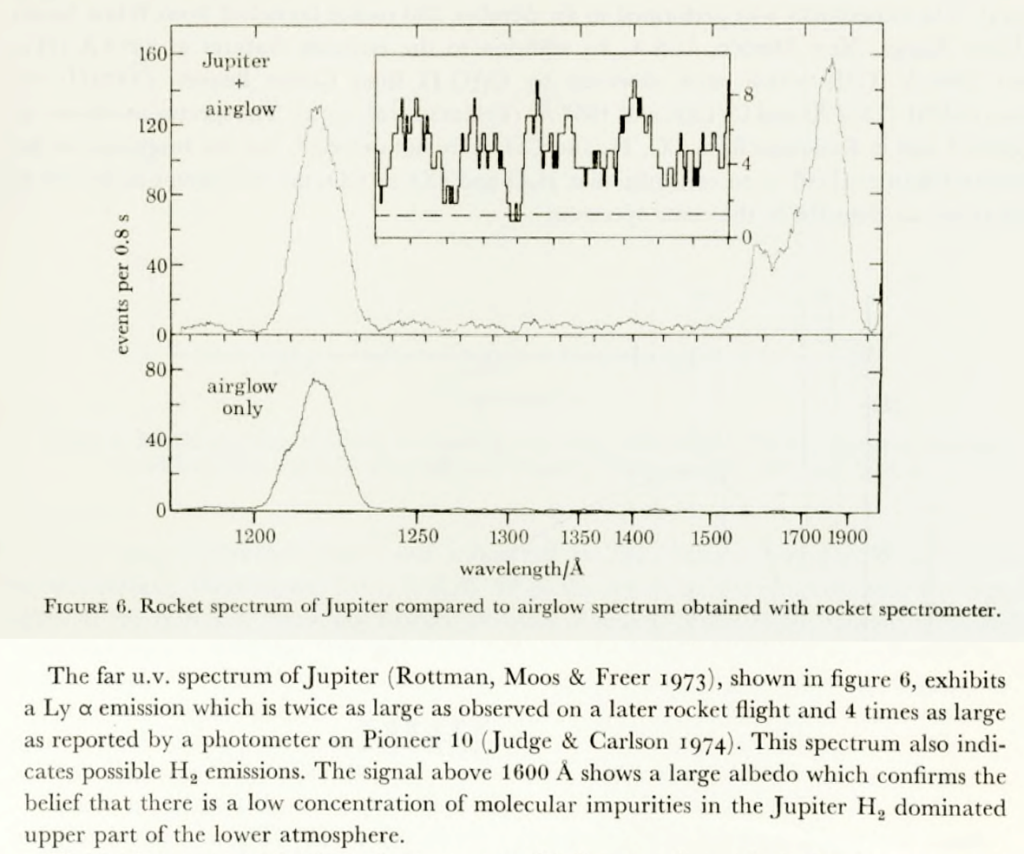
On the same 1967 Aerobee rocket flight used to observe Jupiter, the spectrometer was also adjusted to point at the bright star at the end of the Big Dipper’s handle. Six years later, in 1973, an Ebert-Fastie spectrometer on the Apollo 17 spacecraft obtained a new ultraviolet spectrum of the same star. This spectrometer was in the Command and Service Module which orbited the Moon while astronauts Cernan and Schmitt were driving around in the Lunar Roving Vehicle. The far ultraviolet spectrum of this star and five others contributed to our knowledge of the color of stars which tells us something about how hot they are and what kind of stars they are. It’s a little disconcerting how poorly the papers they published about these stars explained why we needed to learn all this.
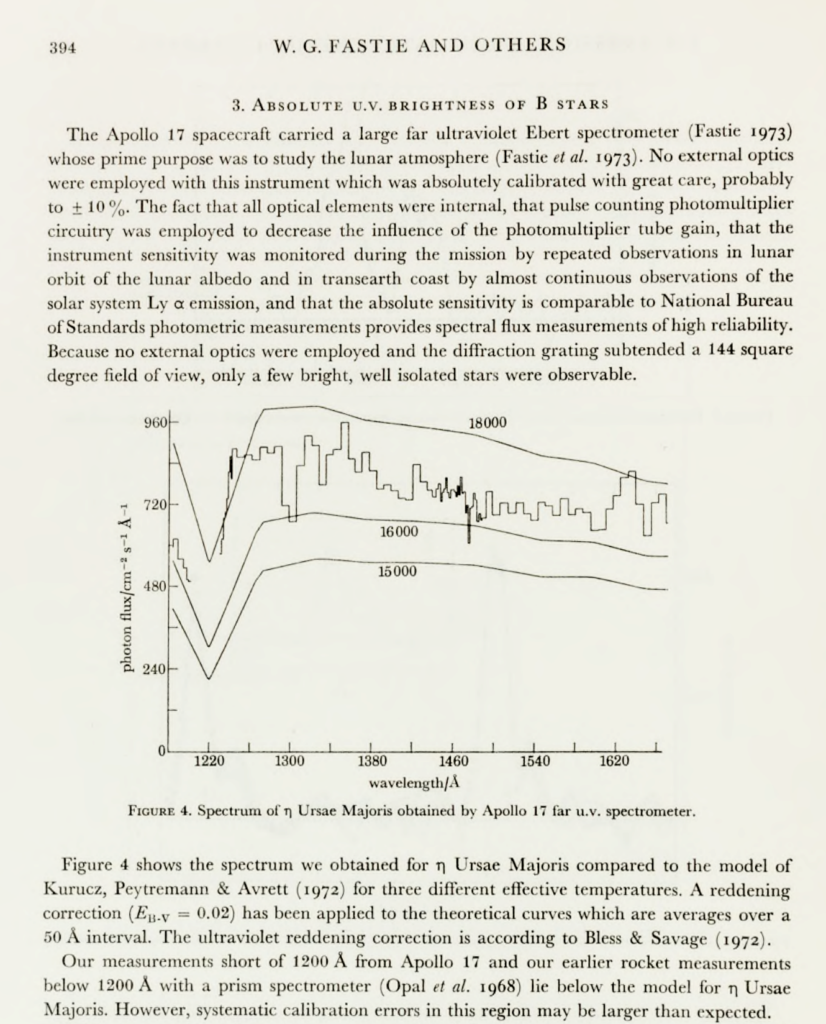
I was in high school and college from 1967 to 1973 when Dad worked on these projects. I was mostly oblivious to what he was doing and only now have an appreciation that this was a departure for him and was a crucial period of his career. Previously he had studied topics like Earth’s atmosphere (aurora, airglow) or bioluminescence (fireflies, dinoflagellates). The new extraterrestrial studies must have been a great awakening for him. He was excited about this work, but Dad was always excited about his work, so I never caught on that it must have been empowering to suddenly take on outer space, to work with and learn from astronomers, to have his instrument orbit the Moon.
It also must have been liberating to rise above the UV-blocking atmosphere. Every UV spectrum he brought back to Earth was new to science and was a revelation to astrophysicists, which is why the published papers didn’t have to explain why or how they were important. No one had ever seen what Dad’s spectrometers could see from above Earth’s atmosphere.
I will have to be careful when I go back to that hilltop at night. If the Moon is out, or if there is an aurora or fireflies, I might be inspired to start over and write a new blog post about Dad. There is plenty more to say.

Awesome cousin dr christopher